|
WASHINGTON, D.C. – Mark Gilbertson is set to retire from federal service at the end of October following 40 years of public and private sector experience.
An EM employee of more than 25 years, Gilbertson mostly recently served as the associate principal deputy assistant secretary (APDAS) for regulatory and policy affairs. He has worked in several other key EM senior leadership positions, including principal deputy assistant secretary, national laboratory officer, and various deputy assistant secretary positions, such as site restoration, program and site support, engineering and technology, and environmental cleanup and acceleration.
“Mark has been a cornerstone of the EM leadership team and key to many of EM’s successes over the years,” EM Acting Assistant Secretary William “Ike” White said. “His considerable knowledge of the program coupled with his extensive experience in environmental engineering and remediation have resulted in significant risk reduction, innovative technology enhancements, and improved integration with the field.”
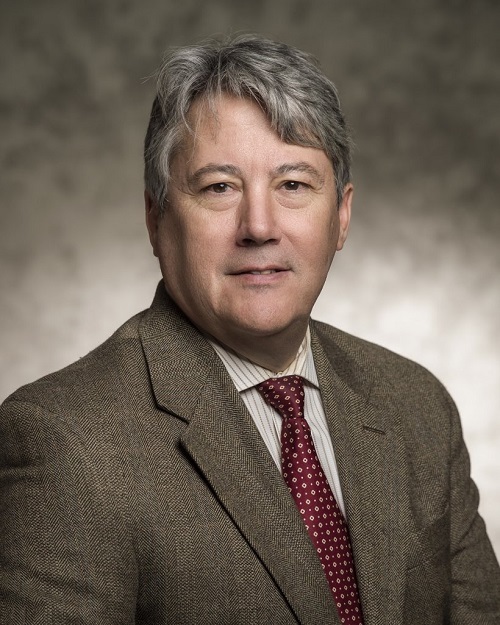 |
|
Mark Gilbertson is set to retire from federal service after 40 years of public and private sector experience, including more than 25 years in EM. |
Jay Mullis, manager of the Oak Ridge Office of Environmental Management, has been selected to serve as EM’s acting associate principal deputy assistant secretary for regulatory and policy affairs starting Nov. 1. |
|
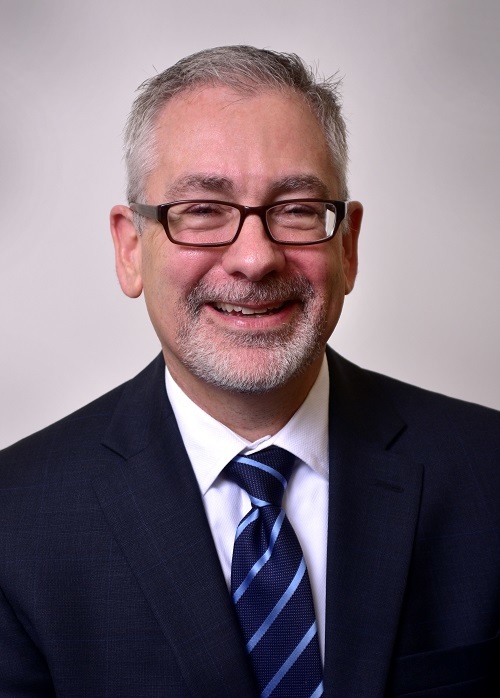 |
Prior to EM, Gilbertson served in key leadership positions in other DOE offices, such as Legacy Management and the former Environment, Safety and Health Office. Gilbertson spent four years at the Environmental Protection Agency working on Resource Conservation and Recovery Act regulations and prior to that, as an engineering consultant.
Jay Mullis has been selected to serve as the acting APDAS for regulatory and policy affairs starting Nov. 1. Mullis is the manager of the Oak Ridge Office of Environmental Management (OREM). In this role, Mullis is responsible for an annual budget of more than $650 million supporting environmental cleanup and stewardship, decontamination and decommissioning, waste processing and management, surveillance and maintenance programs, historic preservation, and procurement and contract functions.
Laura Wilkerson will serve as the acting OREM manager while Mullis is acting APDAS for regulatory and policy affairs. Wilkerson is presently the deputy manager of OREM and has held a variety of leadership positions supporting the Department’s cleanup activities at Oak Ridge. She has more than 30 years of experience directing and managing technical programs and projects for DOE.
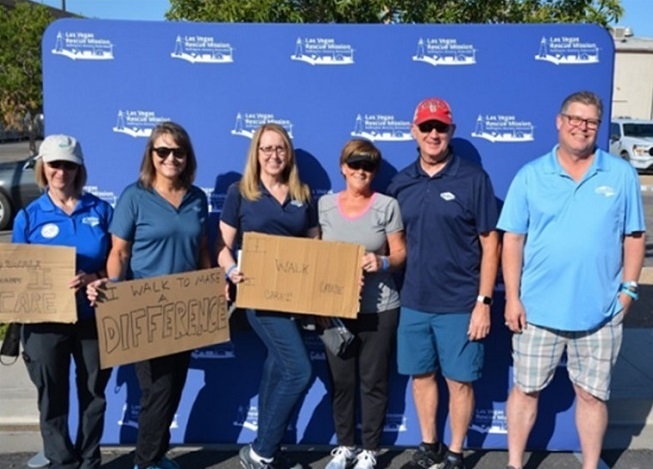 In addition to supporting science, technology, engineering, and math (STEM) programming, the Navarro Research and Engineering Community Commitment Plan also contributes to local community needs. Navarro employees recently participated in the “Walk a Mile in My Shoes” fundraiser for the Las Vegas Rescue Mission, which is located near the EM Nevada Program’s offices in downtown Las Vegas. Team Navarro walkers, from left, are Barb Ulmer, Michelle French, Patty Neese, Phyllis and Dave Taylor, and Ryan Dodd. Not pictured is Kevin Knapp, photographer.
LAS VEGAS – The EM Nevada Program’s environmental program services contractor has developed a new small-grants program to support science, technology, engineering, and math (STEM) programming at schools near the Nevada National Security Site (NNSS).
A committee led by a Navarro Research and Engineering employee is concentrating on four main areas for Navarro’s Community Commitment Program: field trips to the NNSS, STEM-focused events and competitions, student-directed interactive experiences, and small-grant funding to support STEM classroom needs, such as supplies, equipment, and emerging technologies. The committee is currently focusing on the launch of the new small-grants program for the fiscal year that began Oct. 1.
“Navarro is pleased to offer this new small-grants initiative through our Community Commitment Program to support STEM programming at local schools here in Nevada,” said Susana Navarro, Navarro's president. “Our goal is to provide teachers with the resources to introduce new concepts to the classroom and inspire students to pursue a career in the STEM fields, helping to lay the foundation for a highly skilled future workforce for DOE and employers in Nevada and across the nation.”
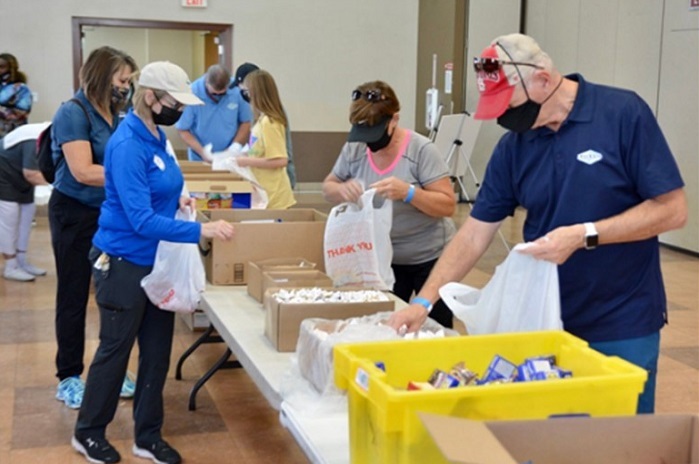 Team Navarro walkers prepare sack lunches for the Las Vegas Rescue Mission. Navarro employees recently participated in the “Walk a Mile in My Shoes” fundraiser for the mission as part of the Navarro Research and Engineering Community Commitment Plan.
Eligibility for the grants program is open to public, private, and charter schools in the counties of Clark, Elko, Esmeralda, Lincoln, Nye, and White Pine in Nevada. All K-12 schools and classrooms are eligible to apply; however, preference will be given to applications supporting clearly defined STEM-based activities. Applications are due by close of business on Dec. 10. The committee will review all grant applications and ultimately forward recommendations for funding to Navarro. Details and applications are available here.
Navarro is supporting the grants program and broader Community Commitment Program through a portion of the annual performance-based fee award for its contract.
The new initiative was established under Navarro's Community Commitment Plan, an element of EM’s end state contracting model. That model calls for cleanup work to be carried out through a series of negotiated task orders that aim to get projects to completion faster and more efficiently without sacrificing safety.
The Community Commitment Planning Committee is currently comprised of two Nevada Site Specific Advisory Board members and three local community education stakeholders. Committee members have assisted with identifying potential projects, community needs, recommendations for the allocation of monetary support, and the facilitation of employee involvement.
-Contributor: Michelle French
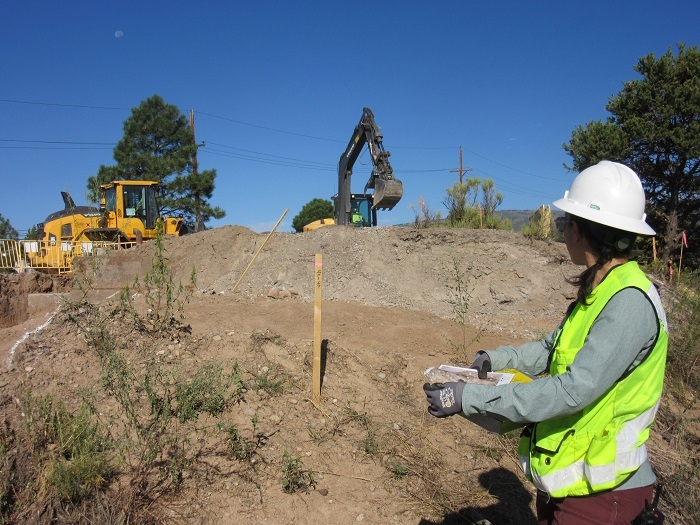 Tessa Hermes, assistant project manager and senior geologist with Newport News Nuclear BWXT Los Alamos (N3B) subcontractor TerranearPMC, assesses the excavation of contaminated soil near one of Los Alamos National Laboratory’s Cold War-era underground explosives firing chambers. The site is part of N3B’s Southern External Boundary Campaign to clean up Lower Water Canyon.
LOS ALAMOS, N.M. – The EM Los Alamos Field Office (EM-LA) and its cleanup contractor have collected more than 3,100 soil samples and excavated more than 1,000 cubic yards of contaminated soil as they remediate land at the southernmost boundary of Los Alamos National Laboratory impacted by historical weapons research and development.
The cleanup at LANL’s southernmost boundary, which is shared by Bandelier National Monument and a portion of Los Alamos County, is intended to prevent contamination from migrating into watersheds that reach the Rio Grande.
The work by EM-LA and Newport News Nuclear BWXT Los Alamos (N3B) is part of a broader cleanup at the Lower Water, Indio, Chaquehui, Potrillo, Fence, North Ancho, and South Ancho canyons. Crews have excavated old incinerators, septic systems, and associated leach fields, as well as contaminated soil near underground firing chambers where high explosives and radioactive testing occurred in support of Cold War efforts.
“In addition to prioritizing human and ecological health at the specific sites N3B is remediating, we also consider the watersheds in each canyon,” said Nathan Canaris, a field execution technical lead in N3B’s Resource Conservation and Recovery Act Program. “We want to prevent any potential contamination from being washed into a watershed that leads to the Rio Grande — and we work to prevent contamination from making its way into groundwater. Protecting those resources is paramount.”
Cleanup at sites is considered complete once crews ensure, through extensive sampling and at times, excavation, that soil meets state environmental standards based on future land use scenarios. Depending on the site’s history, soil is sampled for a variety of contaminants, including metals, radionuclides, high explosives, and human-made chemicals known as volatile organic compounds, which are typically used in industrial solvents.
“Sampling in these canyons has been one of the most challenging aspects of the campaign due to the rugged terrain,” Canaris said. “At a lot of sites, we hike in with hand augers for the shallow digging necessary to collect soil samples because it’s too remote to bring in mechanized equipment.”
N3B has met nine Consent Order milestones associated with the Southern External Boundary Campaign, including three last month. The Consent Order is an enforceable agreement between DOE and the New Mexico Environment Department that guides EM-LA’s legacy environmental cleanup at LANL, and establishes an effective structure for accomplishing the cleanup on a priority basis.
More than half of the 2,100-plus potentially contaminated sites at LANL associated with historical operations and originally identified for investigation have been remediated. Areas range from small spill sites with a few cubic feet of contaminated soil to large landfills encompassing several acres.
-Contributor: Kate Keenan
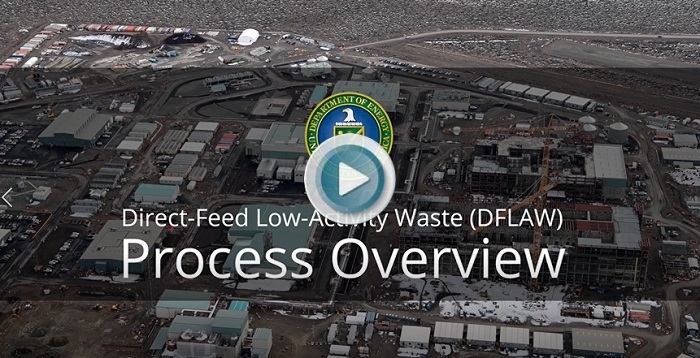 View a new animation that shows the critical process achieving tank waste treatment at the Hanford Site.
RICHLAND, Wash. – A new animation of the Direct-Feed Low-Activity Waste (DFLAW) Program at the Hanford Site shows the integrated procedure that achieves tank waste treatment. That process is a key component of EM’s strategic cleanup vision.
The process starts with tank retrievals and runs through final disposal in the Integrated Disposal Facility. This animation will be used to educate the public, stakeholders, and employees on how the process works from start to finish to treat tank waste safely and efficiently through the DFLAW Program. Hanford plans future animations that will dive deeper into the complex waste treatment and vitrification process.
“Direct-feed” means Hanford’s tank waste will be separated at a tank farm to remove solids and cesium, then fed directly to the Waste Treatment and Immobilization Plant’s Low-Activity Waste Facility for a complex process called vitrification that will immobilize the waste in glass.
View the animation here.
-Contributor: Jill Harvill
 Oak Ridge workers remove mercury and mercury-contaminated solids from process pipes in the column exchange, or COLEX, equipment at the Alpha-4 facility at the Y-12 National Security Complex.
OAK RIDGE, Tenn. – Crews are nearly finished deactivating the second of three collections of old, mercury-contaminated equipment surrounding the Alpha-4 facility at the Y-12 National Security Complex at Oak Ridge.
The project addresses potential environmental risks and moves EM a step closer to preparing one of Y-12’s largest high-risk contaminated facilities for demolition.
The column exchange, or COLEX, structures are connected to the four-story 500,000-square-foot Alpha-4 building, which was used for uranium separation from 1944 to 1945. Workers finished installing the COLEX equipment in 1955 for lithium separation, a process requiring large amounts of mercury. A significant amount of the mercury was lost into the equipment, buildings, and surrounding soils, and its cleanup is one of EM’s top priorities.
In 2018, cleanup contractor UCOR demolished the COLEX equipment on the west end of the building after retrieving 4.6 tons of mercury. The effort prevented a possible significant release of mercury into the surrounding environment.
 A view of the deteriorated East Column Exchange (COLEX) structures, which were installed in the 1950s and operated until the 1960s. Oak Ridge workers are retrieving mercury from the rusted equipment to prevent a release of the chemical element into the environment and prepare the Alpha-4 facility at the Y-12 National Security Complex for demolition.
 Construction is ongoing on the Mercury Treatment Facility at the Y-12 National Security Complex. The facility, set to be operational in 2025, opens the door for large-scale mercury cleanup at the site.
In April, UCOR began deactivating the COLEX structures on the east end of the building. As crews close in on completing deactivation, expected in late November, they have so far captured another 1.25 tons of mercury from cleanup in those pipes and tanks.
“Much of our current East COLEX workforce was also involved in the deactivation and demolition of West COLEX, and they have done an excellent job using that previous experience to safely and effectively complete this deactivation effort,” noted Dan Macias, UCOR Oak Ridge Reservation environmental cleanup manager.
To date, those crews have safely deactivated nearly 2,500 linear feet of process piping, abated 300 feet of asbestos, and removed all universal waste from East COLEX. The final portion of the COLEX equipment, located on the south side of Alpha-4, will be addressed in future years.
EM is also advancing construction on the Mercury Treatment Facility, the linchpin for EM’s cleanup strategy at Y-12 that enables large-scale mercury cleanup. It will prevent potential mercury releases into a nearby creek and allow EM to demolish massive mercury-contaminated buildings and address sources or mercury in the soil beneath them.
The facility, scheduled to begin operating in 2025, will treat up to 3,000 gallons of water per minute.
-Contributor: Susanne Dupes
RICHLAND, Wash. – Two nationally recognized safety organizations recently honored EM Richland Operations Office contractor Central Plateau Cleanup Company (CPCCo) for safety leadership at the Hanford Site.
Megan Proctor, CPCCo’s director of environmental, safety, health, and quality, was presented with the Marion Martin Award at last week’s National Safety Council (NSC) annual symposium in Orlando, Florida. The award celebrates the accomplishments of women in safety who have demonstrated professional excellence and helped pave the way for other women in the field.
“I’m really proud of what this award represents for our whole team,” Proctor said. “Safety is not just a buzzword at Hanford; it’s something we live every day as we navigate the challenges of our critically important cleanup mission.”
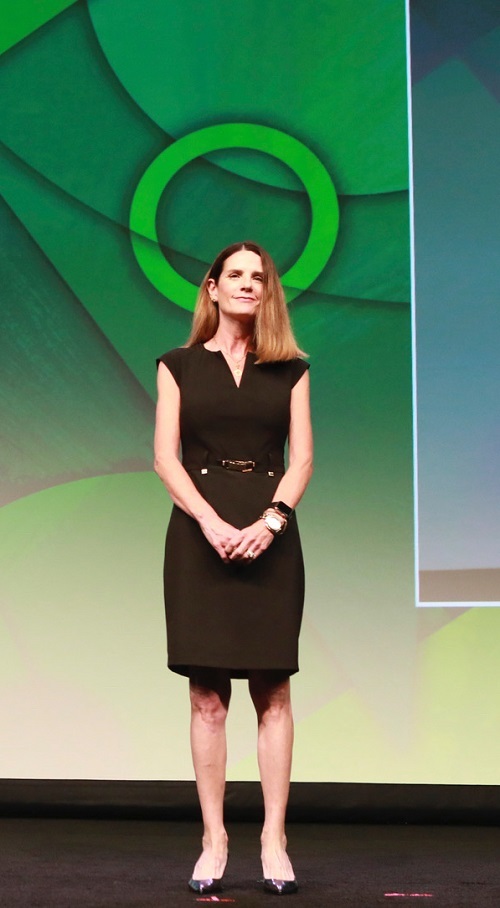 |
|
Megan Proctor, director of environmental, safety, health, and quality for EM Richland Operations Office contractor Central Plateau Cleanup Company, accepts the Marion Martin Award at the National Safety Council annual symposium Oct. 11 in Orlando, Florida. The award celebrates the accomplishments of women in safety who have demonstrated professional excellence and helped pave the way for other women in the field. |
 Frank Vargas, the Hanford Atomic Metal Trades Council safety representative for EM Richland Operations Office contractor Central Plateau Cleanup Company, holds the Voluntary Protection Programs Participants’ Association Innovation Award. The contractor was recently recognized with the national award for developing a customized personal protective equipment suit, at right, to keep electrical workers on the Hanford Site safe from arc flashes and airborne contamination.
In August, CPCCo was named as an Innovation Award winner at the annual Voluntary Protection Programs Participants’ Association (VPPPA) safety conference in Nashville, Tennessee. The award recognized the company for developing a customized personal protective equipment suit to improve safety for electrical workers at Hanford, protecting them from multiple hazards.
The suit protects workers from arc flashes, but also any airborne chemical or radiological contamination they may encounter. Extensive testing confirmed the effectiveness of the protective equipment, which workers are beginning to use in the field.
“Worker involvement was a key component of developing this innovative equipment to address some unique safety concerns in our work at Hanford,” said Frank Vargas, CPCCo’s Hanford Atomic Metal Trades Council safety representative. “Safety improvements often require creative thinking and a collaborative approach, and this product is an excellent example of that.”
The NSC is a nonprofit safety advocate focused on eliminating the key causes of preventable injuries and deaths. The VPPPA is a national leader in helping worksites achieve continuous improvement toward their occupational safety and health goals.
-Contributor: Lynn Tegeler
CARLSBAD, N.M. – An employee with a company that supports EM’s Waste Isolation Pilot Plant (WIPP) has received the American Nuclear Society’s (ANS) 2021 Landis Public Communication and Education Award.
Josh Vajda, an advisory engineer with Regulatory Environmental Services (RES), was honored for exemplary outreach efforts, domestically and internationally, to increase public understanding of nuclear careers and to promote the importance of professional licensure.
During his seven years with RES, Vajda has completed a doctorate degree in engineering management, obtained a Master of Science degree in materials science and engineering, and maintained professional certifications in nuclear engineering and health physics.
Vajda obtained his doctorate and master’s degrees through an education assistance and reimbursement program through Nuclear Waste Partnership (NWP), WIPP’s management and operations contractor. RES is a NWP subcontractor.
“Please join me in celebrating this recognition and congratulating Josh on receiving this prestigious award,” RES manager Rick Chavez said. “And thanks to NWP President Sean Dunagan for the continued support through the NWP educational assistance program which has benefitted Josh and, recently, two other RES employees.”
 |
|
Josh Vajda, an advisory engineer with Regulatory Environmental Services (RES), has been recognized by the American Nuclear Society with the 2021 Landis Public Communication and Education Award. RES is a company that supports EM’s Waste Isolation Pilot Plant. |
RES operates WIPP’s regulatory compliance program. Vajda has helped prepare, review, and implement regulatory documentation while working at WIPP.
Vajda has been an ANS member since 2010, and in 2015 he became a member of the society’s Carlsbad chapter. Vajda has conducted educational outreach at local high schools, supported the annual ANS National Student Conference, provided leadership as chair of the ANS Professional Engineering Examination Committee, and promoted development of nuclear power — with an emphasis on the importance of ethics and reactor safety — in the United Arab Emirates.
In 2019, Vajda helped plan a tour of the Urenco National Enrichment Facility in Eunice, New Mexico for members of the public, including local students. Tour participants learned about gas centrifuge technology in the production of nuclear fuel.
The award recognizes an individual for outstanding efforts, dedication, and accomplishment in furthering public education and understanding of the peaceful applications of nuclear technology.
That includes outstanding communication in public venues as well as exceptional work done to inform teachers, students in kindergarten through 12th grade, and other audiences in public education settings about nuclear science and technology applications and nuclear careers. The award is given to an individual who has made a significant impact in public education and communication.
The award includes an engraved plaque and a $1,000 monetary award.
The society’s mission is to advance, foster, and spur the development and application of nuclear science, engineering, and technology to benefit society.
-Contributor: Roy Neese
|